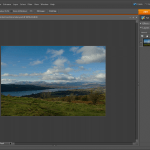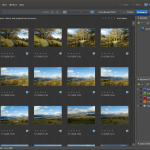A tendency for overexposure?
14th July 2010A recent trip to Sweden saw my Canon PowerShot G11 being put to rather more use than was expected. If I had known what might have been coming my way, I may even have eschewed the principle of lightweight packing to bring along my Pentax DSLR. Nevertheless, the little Canon did what ever was asked of it when light was plentiful.
Once thing that I have noticed in comparison with the Pentax is the Canon’s tendency to overexpose a scene. To a point, this can be explained by the former having proper spot-metering and the latter having the less specific partial metering. In fact, that might explain why a Canon EOS 10D SLR in my possession has the same tendency. Maybe it’s time to make more use of the Sekonic light meter that I have but that adds bulk that doesn’t fit in with the idea of carrying a compact camera around with you.
That leaves getting more practice with exposure corrections at processing time (I do capture all my photos in raw format). Going further, I am finding that the same consideration appears to apply to image sharpening too. It’s almost as if you need to develop a feeling for the results produced by a camera before satisfaction with any acquired photos will follow. Having decent lighting at capture time and not having muck on the sensor helps too as I have discovered with the photos made used my Pentax K10D on a recent visit to Arran and Argyll. The state of the sensor needs sorting (even if it has an anti-dust system on board) but I sometimes wonder if my judgement of lighting is what it used to be or whether my aspirations have gone too high. Maybe I need to slow down a little so as to set aside time for working on getting better results and with the right light, a quantity that should come with autumn and winter. In the meantime, I’ll stick with making the best of the British summer.
Why the manual step?
18th January 2010One of the consequences of buying a new camera is that your current photo processing software may not be fully equipped for the job of handling the images that it creates. This is a particular issue with raw image files and Adobe Photoshop Elements 5 was unable to completely handle DNG files made with my Pentax K10D until I upgraded to version 7. Yes, I do realise that the upgrading camera should been in order but I only lost the white balance adjustments so I could with things as they until upgrading gained a more compelling case.
As things stood, Elements 7 was unable to import CR2 files from my Canon PowerShot G11 into the Organiser so it was off to the appropriate page on the Adobe website for a Camera Raw updater. I picked up the latest release of Camera Raw (5.6 at the time of writing) even though it was found in the Elements 8 category (don’t be put by this because release notes address the version compatibility question more extensively). Strangely, the updater doesn’t complete everything because you still need to copy Camera Raw.8bi from the zip archive and backup the original. Quite why this couldn’t have been more automated, even with user prompts for file names and locations, is beyond me but that is how it is. However, once all was in place, CR2 files were handled by Elements without missing a beat.
A new acquisition
16th January 2010Back in the early days of this blog, I mulled over the idea of having a high-end digital compact camera to complement a DSLR that then was delivering very dusty images; that Canon EOS 10D was cleaned since then and comes in for occasional use to this day. That was nearly three years ago and a first generation Ricoh GR Digital was the item that then was catching my eye. At the time, I failed to justify spending that much money on such a thing and ended up acquiring a new Pentax K10D DSLR instead. The question that rattled about my head was this: what was the point of spending DSLR money on a compact camera? Its one that never really went away and comes to mind when you see the prices of interchangeable lens compacts like Olympus’ Pen and equivalent offerings from Panasonic and Ricoh (there, it’s interchangeable lens units rather than actual lenses).
The strongest counterpoint to the cost conundrum is the little matter of size. SLR (film or digital) cameras are sizeable things and there is a place for having something that drops into a pocket. It is that which has propelled me into taking delivery of a Canon PowerShot G11. It may need a good-sized pocket but, unless you are going out with no jacket, it shouldn’t be a problem most of the time. For those shorter sorties when I don’t fancy bringing an SLR out, it well-built and looks the business though some acclimatisation is in order to make the best of the knobs, buttons and menus. Nevertheless, the included manual will help with this process (there’s a paper quick start guide and more detailed documentation on CD).
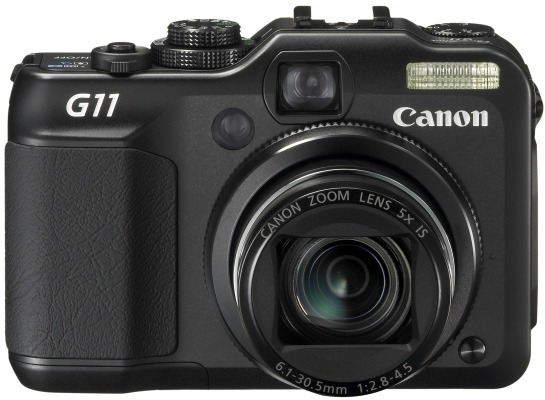
The camera hasn’t seen extensive use just yet so here are a few early impressions. Firstly, there’s the matter of size: it’s even smaller than the first camera that I ever bought (more than fifteen years ago) and that was a Ricoh 35 mm compact film camera. That comparison is even more striking when you consider the feature sets. The Ricoh was a fixed 35 mm lens affair with things like date and time stamping, ISO choice and a nod towards scenic mode selection. In contrast, the much newer Canon is loaded with the sorts of things that normally are found almost exclusively on SLR’s, starting with its effective 28-140 mm focal length range.
Exposure modes such as manual, aperture priority and shutter priority complement scene-based modes and another for movies (not a concern of mine, it has to be said). As if that weren’t enough, there’s exposure compensation too. It came as a surprise to me to find a form of manual focussing included though it is not as convenient as turning a focussing ring on a lens. You can see the inbuilt flash above but there’s also a hotshoe and a place to attach a tripod too. Settings like white balance and file format are accessed using the Function/Set button with the lever underneath the shutter release button controlling the focal length of the lens. In addition, there’s also image stabilisation and that’s important when you’re using live view to compose a photo. Spot metering and focal point selection are other things that find their way into the package. Some may be excited by other things but exposure and focussing are essential for any photographic efforts.
An optical viewfinder is included and it has dioptre settings too but my first impressions are that live view though the rear screen trumps it and I see no need for such things on SLR’s. That also flips out from the camera body and can be rotated either for self-portraiture or for folding back in on the camera body for use like a non-articulated screen. Another use is with those occasions when the subject means holding the camera in positions that would be impossible with a conventional screen; holding the camera over your head or down low on the ground are the sorts of situations that come to mind.
Of course, there’s more there than those features that I have listed and the specifications on the Canon website are as good a place to start as any. So far, my only testing has been of the cursory checks variety and to make sure that the thing works properly. Still, this has given me more of a feel for the camera and how it operates. As you’d expect, high ISO settings are noisy but a bigger surprise was that the smallest aperture setting is f/8. Being used to SLR’s, I was expecting to get f/16 and its like on there but a spot of internet investigation showed that I should have been taking the size of the sensor into account with my expectations. Any trials so far have been in dull weather so I’d need to use it in a wider variety of conditions before giving it the sort of wider appraisal that you’d find in the likes Outdoor Photography (who liked it, it has to be said). For what it’s worth, I have found no major criticism so far though I cannot see it usurping my SLR’s but that never was the intention anyway.
8?
12th October 2009It now seems that we have a new version of Photoshop Elements from Adobe for every year unless you’re a Mac user. Version 7 convinced me to splash out and that gained me Camera Raw recognition of my Pentax K10D along with subtly enhanced image processing power that I have been putting to good use to get more pleasing results than I ever got before. What can be achieved by using levels, curves and the shadow/highlight adjustment tool for exposure correction has amazed me recently. Quick selection functionality has allowed me to treat skies differently from everything else in landscape photos, a flexible graduated filter if you like. It seems to work on Windows 7 along with Vista and XP so I plan to stick with it for a while yet. As you may have gathered from this, it would take some convincing to make me upgrade and, for me, version 8 doesn’t reach that mark. All in all, it seems that it is a way of giving Mac users a new release with added goodness after having to stay with 6 for so long; yes, there are new features like autotagging in the image organiser but they just don’t grab me. Given that they already have Aperture from Apple and Windows users seem to get more releases, it’s a wonder that any Mac user would toy with Elements anyway. Maybe, that’s Adobe’s suspicion too.
Temptations, temptations…
19th August 2009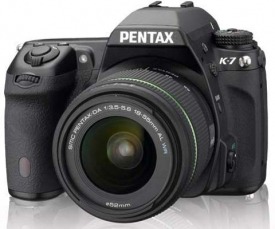
The last time that I went out and bought a new camera was over two years ago and I am minded not to make another purchase for a while. Apart from damage to the battery cover arising from a fall, my Pentax K10D has survived so far without a problem and I admit to being satisfied with the photos that it makes. Following a professional sensor clean, my Canon EOS 10D has been pressed into service over the past few months too. In the meantime, 6 and 10 megapixel sensors generate nowhere near the attention that might have been case a few years back but that’s by the by. In fact, the megapixel race seems to have stalled with features like video being added to stills cameras over the last year and live screens coming to prominence also. Neither would make me rush out to buy a new DSLR anyway, perhaps because having things the old way suits me just fine and megapixel counts never ever moved me in the first place either.
That’s never to say that the likes of Pentax’s K-7 or Canon’s EOS 50D and 5D Mark II don’t capture my attention with their promises of better quality. However, with things the way that they are in the world, I am more likely to hold onto my cash or maybe invest in new photo processing software for making the most of what I already have. Ideas for photography projects creep into my head when I get to looking over my online photo gallery and realise that not have my tastes changed but my photographic eye has developed too. That seeing of things in a new light may mean that old subjects get revisited and I don’t need a new camera to do that.

High end compact cameras such as Canon’s G11 and Ricoh’s GR Digital III do detain attention for a while but a quick look at their prices proves that you really got to need the portability and I never can justify the outlay when a DSLR will do all that I want from it, and perhaps even for less money. While I admit to pondering the purchase of a GR Digital to cover for the EOS 10D while it was away for cleaning, the Pentax came to be acquired when I realised that the versatility of a DSLR was too much to lose, even for a while. Olympus’ E-P1 may have bridged the gap but the old question of going miniature for the price of a full sized article recurs.
All in all, I am going to stick with what I have right now. We are coming to a time of year when things appear more golden and that combination of lighting and colour are what really matters, not how many megapixels is in you camera sensor unless you are making large prints or supplying stock libraries. As long as my cameras continue to deliver pleasing results, I’ll stick with improving my skills and taking my time over that task, even with all the announcements of new cameras at various exhibitions and shows.
Ubuntu upgrades: do a clean installation or use Update Manager?
9th April 2009Part of some recent “fooling” brought on by the investigation of what turned out to be a duff DVD writer was a fresh installation of Ubuntu 8.10 on my main home PC. It might have brought on a certain amount of upheaval but it was nowhere near as severe as that following the same sort of thing with a Windows system. A few hours was all that was needed but the question as to whether it is better to do an upgrade every time a new Ubuntu release is unleashed on the world or to go for a complete virgin installation instead. With Ubuntu 9.04 in the offing, that question takes on a more immediate significance than it otherwise might do.
Various tricks make the whole reinstallation idea more palatable. For instance, many years of Windows usage have taught me the benefits of separating system and user files. The result is that my home directory lives on a different disk to my operating system files. Add to that the experience of being able to reuse that home drive across different Linux distros and even swapping from one distro to another becomes feasible. From various changes to my secondary machine, I can vouch that this works for Ubuntu, Fedora and Debian; the latter is what currently powers the said PC. You might have to user superuser powers to attend to ownership and access issues but the portability is certainly there and it applies anything kept on other disks too.
Naturally, there’s always the possibility of losing programs that you have had installed but losing the clutter can be liberating too. However, assembling a script made up up of one of more apt-get install commands can allow you to get many things back at a stroke. For example, I have a test web server (Apache/MySQL/PHP/Perl) set up so this would be how I’d get everything back in place before beginning further configuration. It might be no bad idea to back up your collection of software sources either; I have yet to add all of the ones that I have been using back into Synaptic. Then there are closed source packages such as VirtualBox (yes, I know that there is an open source edition) and Adobe Reader. After reinstating the former, all my virtual machines were available for me to use again without further ado. Restoring the latter allowed me to grab version 9.1 (probably more secure anyway) and it inveigles itself into Firefox now too so the number of times that I need to go through the download shuffle before seeing the contents of a PDF are much reduced, though not completely eliminated by the Windows-like ability to see a PDF loaded in a browser tab. Moving from software to hardware for a moment, it looks like any bespoke actions such as my activating an Epson Perfection 4490 Photo scanner need to be repeated but that was all that I needed to do. Getting things back into order is not so bad but you need to allow a modicum of time for this.
What I have discussed so far are what might be categorised as the common or garden aspects of a clean installation but I have seen some behaviours that make me wonder if the usual Ubuntu upgrade path is sufficiently complete in its refresh of your system. The counterpoint to all of this is that I may not have been looking for some of these things before now. That may apply to my noticing that DSLR support seems to be better with my Canon and Pentax cameras both being picked up and mounted for me as soon as they are connected to a PC, the caveat being that they are themselves powered on for this to happen. Another surprise that may be new is that the BBC iPlayer’s Listen Again works without further work from the user, a very useful development. It very clearly wasn’t that way before I carried out the invasive means. My previous tweaking might have prevented the in situ upgrade from doing its thing but I do see the point of not upsetting people’s systems with an overly aggressive update process, even if it means that some advances do not make themselves known.
So what’s my answer regarding which way to go once Ubuntu Jaunty Jackalope appears? For sake of avoiding initial disruption, I’d be inclined to go down the Update Manager route first while reserving the right to do a fresh installation later on. All in all, I am left with the gut feeling is that the jury is still out on this one.
No autofocus?
25th March 2009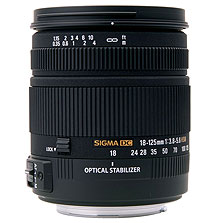
Recently, I recently treated myself to a Sigma 18-125 mm f/3.8-5.6 DC HSM zoom lens for my Pentax K10D. There was a wait for the item to appear and I then found that the lens’ autofocus facility wasn’t compatible with the body. Standard wisdom would have it that I sent the thing back and ask for a replacement or a refund.
Perhaps inexplicably, I did neither. In fact, I came to the conclusion, that since I make photos of landscapes anyway, that been slowed down by the lack of autofocus was no bad thing except perhaps when appealing light makes fleeting appearances. It is true to say that a used Pentax manual focus lens would have been cheaper but I did what I did.
The camera’s autofocus indicator still works and the 18-55 mm zoom that came with the camera wasn’t impressive anyway, so taking matters into my own hands was something that happened a lot. Now, I have better quality glass in front of the sensor and with a metal mount and longer range too. The lens comes with a petal hood too, though I keep that for when I really need it rather than keeping it on the lens and stopping myself focussing the thing.
Speaking of zooming and focussing, the controls work well and smoothly without being at all loose. The AF setting gets used to lock the focus and the zoom can be locked at the wide end so that the lens doesn’t get into the habit of zooming under the influence of gravity, not a bad thing. For future lens purchases, I might be more inclined to ask about compatibility next time around (I may have been spoiled by the Canons that I used to use) but I remain content for now.
All in all, it feels like a quality item and it’s a pity that Pentax saw fit to make the changes that they made, or that Sigma didn’t seem to have kept up with them. Saying that, my photographic subjects usually don’t run off so being slowed down is no bad thing at all, especially if it makes me create better photos.
On Photoshop Elements 7
10th November 2008In recent days, I have been playing around with Photoshop Elements 7, doing the same sort of things that I have been doing with Elements 5. Reassuringly, I can still find my way around, even if the screen furniture has been moved about a little. My Pentax K10D is recognised and I am able to set white balance to get sensible results. On the images that I was testing, things started to look too warm in the Cloudy and Shade settings but that’s all part and parcel of processing photos taken in early November. The results of my exertions look decent enough and you can see them in a post on my hillwalking blog.
I realise that Adobe has been promoting the ability to easily airbrush unwanted objects from images and enhance blue skies but there’s no point having all of that if functionality available in previous versions does not work as expected. Thankfully, this is largely the case but there are a few niggles. I have working the new Elements on a Windows XP SP3 virtual machine running in VirtualBox 2.04 on Ubuntu 8.10 so I don’t know if that contributed in any way to what I encountered. One gigabyte of memory is allocated to the VM. The files were stored in the Ubuntu file system and accessed using VirtualBox’s functionality for connecting through to the host file system. File access was fine but I was unable to directly open a file for full editing from the Organiser, something that I have doing very happily with Elements 5. I also noted a certain instability in the application and using the hand tool to get to the top left hand corner of an image sent the thing into a loop, again something that Elements 5 never does. Otherwise, things work as they should but what I saw points to the need for an update to correct any glitches like these and I hope that there is one. For now, I will persevere and see if I can make use of any additional functionality along the way.
- Adobe Photoshop Elements 7 Editor
- Adobe Photoshop Elements 7 Organiser
Another avalanche of new DSLR’s…
24th January 2008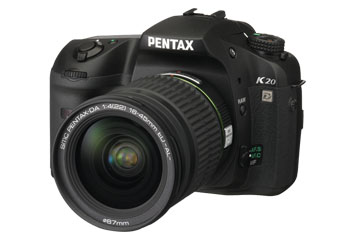
A flurry of new DSLR announcements came out today; they seem to come in droves when they do arrive but I reckon that upcoming photography shows might have something to do with it. Canon replaced its entry level offering with the 12.2 megapixel EOS 450D. Yes, I know that megapixels aren’t everything but a goodly number does make a rather good impression and Canon’s range looks a bit lop-sided again with the entry level DSLR on the surface of it having the potential for recording more detail than the next one up in their range, the EOS 40D. It almost seems that it would have been more sensible to delay the arrival of that camera until after the 450D and give enthusiasts a really impressive option. As it stands, they might end up playing into the hands of Nikon with its D300, a strong contender if I were on the market looking for a DSLR. Pentax displays no such idiosyncrasies with it 10.2 megapixel K200D and 14.6 megapixel K20D, and Samsung has also presented their variant of the latter: the GX200. It will be interesting to see reports of how all of these new arrivals perform. Launches like this do not take long to make your once shiny acquisitions look dated and that fate certainly seems to have befallen my K10D. For some reason, that reminds me that my trusty old EOS 10D needs to be sent away for cleaning, a job that has been on the to do list for while.
More digital than film?
26th October 2007Despite the rampant progress of digital photography, I have continued to stick with film and sit astride the fence. That is something that I wish to continue but my most recent trips into the outdoors have seen me use my Pentax K10D exclusively. That, however, could be something to do with the subject matter. My most recent trot took me into what might be described as featureless moorland, a tricky subject to capture in the best way. So, possibly because of the lesser likelihood of success, I stuck with digital since any lack of success costs less. Previous trips took me out and about locally where I live and I seem to be more likely to use digital, possibly because I have been around the area a lot with my film camera anyway. Also, the vistas, as pleasant as they are, do not possess the drama of the likes of Highland Scotland, the English Lake District, or the mountainous parts North Wales.
That does lead to the impression that I am keeping film for the new and dramatic stuff and it may be true. it is, however, not entirely deliberate and I will continue to take both digital and film cameras with me on my excursions. My reason for taking a DSLR is that I want to put some photos into my posts on my outdoors blog and the world of digital easily speeds that process; my laggardness with getting films processed would add to the time taken too. And film? There is still a certain something about getting a print done for a photo album and the process does force me to print my photos, something that is not a compulsion in the digital world. There is also a greater feeling of permanance with film, a format that has been with us in its various guises for over a hundred years. With the pace of change in the world of computing, would the likes of DNG hold its own for that long?
